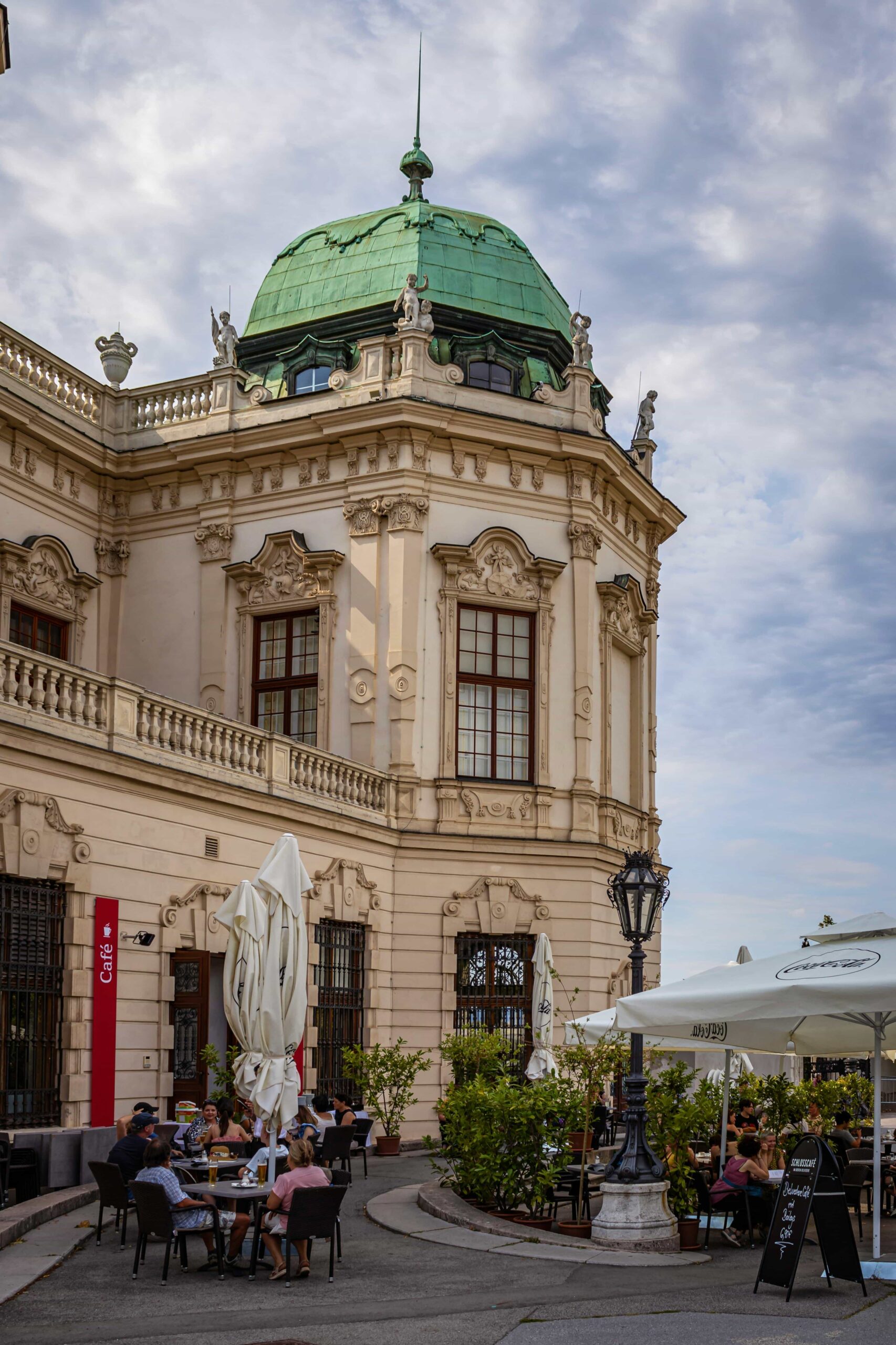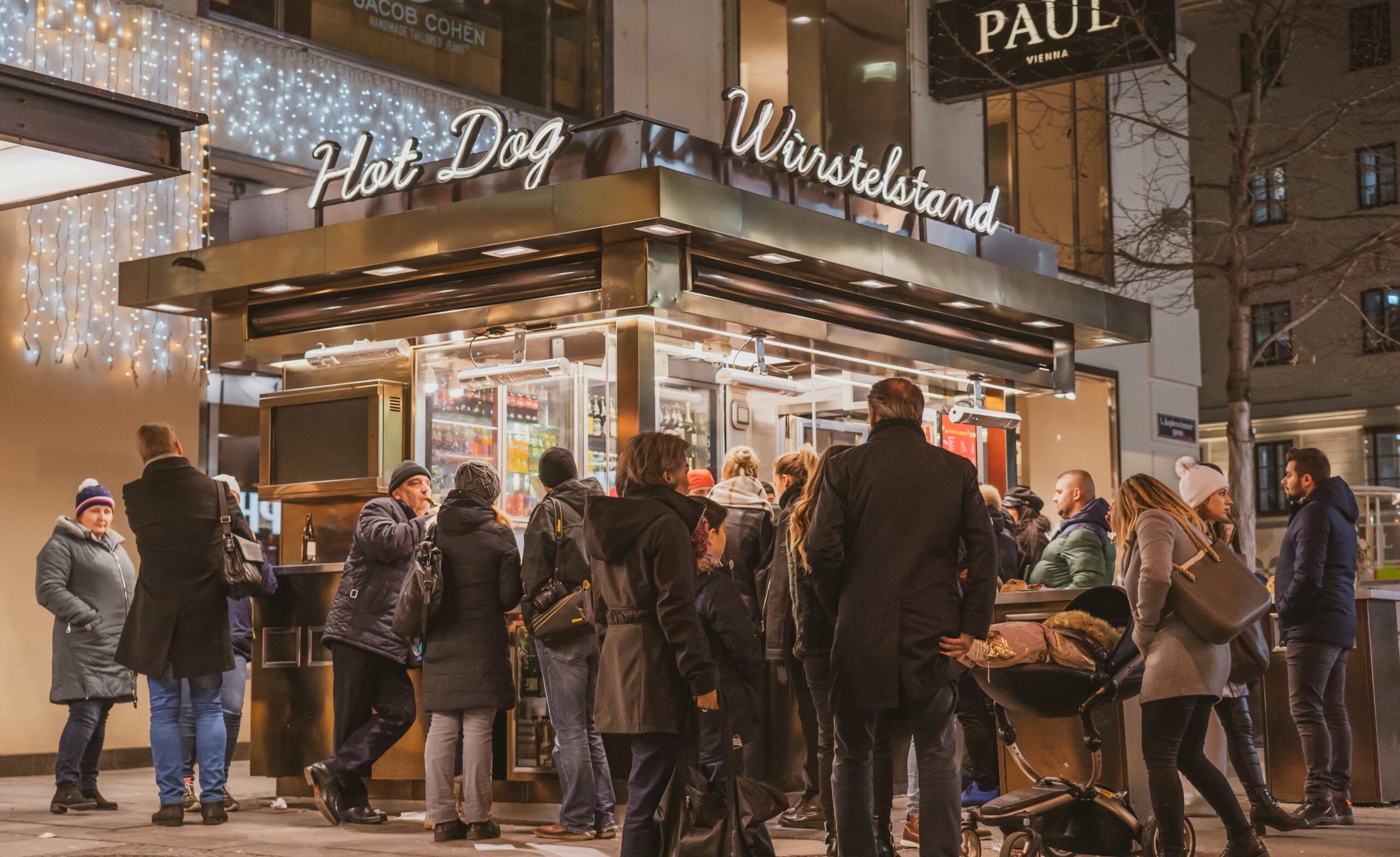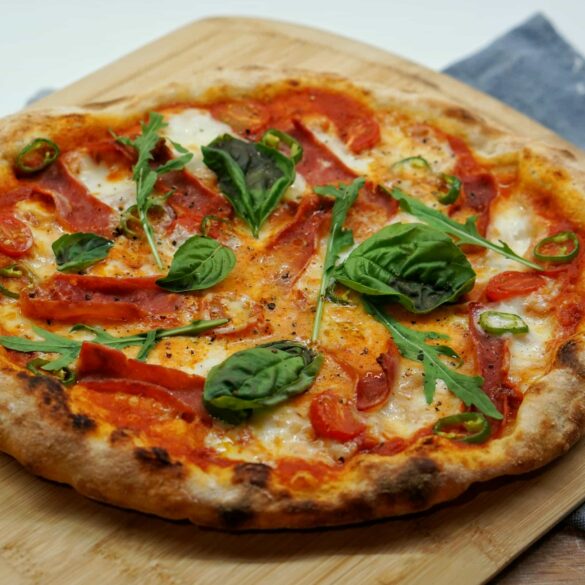Vienna’s Food Scene: Where Imperial Tradition Meets Contemporary Innovation
Walking through Vienna’s cobblestone streets last autumn, I was struck by something remarkable—the intoxicating aroma of fresh Apfelstrudel dough wafting from a centuries-old bakery, competing with the bold scents of Ethiopian coffee from a modern specialty roastery just around the corner. This, honestly, perfectly captures what makes Vienna’s food scene so utterly fascinating.
Vienna’s culinary landscape represents far more than just traditional Austrian fare. Having spent considerable time exploring this magnificent city’s gastronomic offerings, I’ve consistently found that Vienna manages to honor its imperial past while embracing contemporary culinary trends with remarkable grace. The result? A food scene that’s both deeply rooted in tradition and surprisingly innovative.
Austria Culinary Heritage: Vienna’s food culture reflects over 650 years of Habsburg influence, creating a unique fusion where Hungarian goulash, Bohemian dumplings, and Italian coffee traditions merged with Germanic cooking methods. This imperial legacy directly shaped modern Austrian cuisine, making Vienna one of Europe’s most culinarily diverse capital cities.
The Foundations: Understanding Vienna’s Culinary DNA
Here’s what genuinely fascinates me about Viennese cuisine—it’s essentially a love letter to the entire former Austro-Hungarian Empire. When I first started exploring Vienna’s traditional restaurants, I initially expected simple Germanic fare. Boy, was I wrong.
The city’s signature dishes tell stories of cultural exchange that span centuries. Take Wiener Schnitzel, for instance. Despite its name, food historians trace its origins to the Italian cotoletta alla milanese1. Austrian generals encountered this breaded cutlet technique in northern Italy during the 19th century and adapted it using local veal and traditional Austrian cooking methods.
“Viennese cooking isn’t just about feeding people—it’s about preserving memories, celebrating relationships, and honoring the seasons. Every dish carries emotional weight.”
This cultural blending becomes even more apparent when you examine Vienna’s pastry traditions. The famous Sachertorte? Created in 1832 by Franz Sacher, combining French pastry techniques with Austrian chocolate craftsmanship and Hungarian apricot preserves. Apfelstrudel demonstrates similar cultural fusion—thin dough stretching techniques borrowed from Turkish baklava-makers, filled with local Austrian apples and served with distinctly Germanic accompaniments.
Vienna’s Legendary Coffeehouse Culture: More Than Just Coffee
Honestly, I had no idea what I was missing until I spent an entire afternoon in Café Central, watching locals engage in what can only be described as a ritual. Vienna’s coffeehouse culture, recognized by UNESCO as an Intangible Cultural Heritage2, represents something far more significant than simply drinking coffee.
Essential Viennese Coffee Terminology
- Melange: Similar to cappuccino, topped with whipped cream
- Einspänner: Strong black coffee served in glass with whipped cream
- Fiaker: Coffee with rum, served with whipped cream
- Brauner: Coffee with milk, available in small (kleiner) or large (großer)
Traditional Viennese coffeehouses operate under an unspoken social contract. You’re expected to linger, read newspapers provided free of charge, engage in conversation, or simply observe. During my visits, I’ve witnessed business deals negotiated over Sachertorte, artists sketching fellow patrons, and elderly couples sharing quiet moments over afternoon Melange.
The pastry selection accompanying Viennese coffee culture deserves special attention. Each coffeehouse maintains relationships with specific konditorei (pastry shops), ensuring authentic preparation methods. I’ve consistently found that the best experiences happen when you allow the waiter—never call them servers here—to recommend pairings based on seasonal availability and your coffee choice.
Seasonal Rhythms: How Vienna Celebrates the Calendar Through Food
Vienna’s food scene follows distinctly seasonal patterns that reflect both agricultural availability and cultural traditions. Having experienced the city across multiple seasons, I can definitively say that timing your visit affects your culinary experience significantly.
| Season | Signature Dishes | Local Ingredients | Cultural Events |
|---|---|---|---|
| Spring | Asparagus dishes, early strawberries | White asparagus, fresh herbs | Easter markets, wine festival beginnings |
| Summer | Cold soups, fresh fruit desserts | Apricots, cherries, summer vegetables | Heuriger season, outdoor dining |
| Autumn | Game meats, apple strudel, new wine | Wild mushrooms, apples, pumpkins | Harvest festivals, Sturm season |
| Winter | Hearty stews, Christmas cookies | Root vegetables, preserved meats | Christmas markets, New Year celebrations |
Spring in Vienna brings asparagus fever—seriously, it’s a genuine obsession. Restaurants completely redesign menus around Spargel season, typically running from late April through June. I’ve watched entire families plan weekend trips to asparagus farms in Lower Austria, treating white asparagus harvesting like a cultural pilgrimage.
Summer transforms Vienna’s dining scene entirely. Heuriger wine taverns3 flourish during warmer months, offering new wine paired with traditional cold cuts and spreads. These establishments, often family-owned for generations, represent authentic Viennese dining at its most relaxed and communal.

Contemporary Vienna: Where Innovation Meets Tradition
What really excites me about Vienna’s current food scene is how younger chefs are reinterpreting classic Austrian techniques without losing cultural authenticity. This isn’t fusion for fusion’s sake—it’s thoughtful evolution based on deeper understanding of traditional methods.
Restaurants like Steirereck and Tian have earned international recognition by applying modern techniques to traditional Austrian ingredients4. I’ve watched head chef Heinz Reitbauer at Steirereck transform simple Wiener Schnitzel concepts into multi-course tasting experiences that honor the dish’s essence while pushing culinary boundaries.
“We’re not trying to reinvent Austrian cuisine—we’re trying to understand it better. Every traditional recipe contains wisdom about ingredient relationships, seasonal timing, and cultural values that modern techniques can illuminate.”
Naschmarkt and Beyond: Vienna’s Market Culture
Vienna’s market scene extends far beyond the famous Naschmarkt, though that remains an essential experience. Having spent countless morning hours exploring various neighborhood markets, I’ve discovered that each serves different community needs and reflects distinct cultural influences.
The Naschmarkt itself spans nearly two kilometers and houses over 120 vendors5. But here’s what tourists often miss—the real magic happens early morning when local chefs and serious home cooks arrive for ingredient selection. I recommend arriving before 9 AM for the authentic experience and best selection.
Vienna’s Hidden Market Gems
- Brunnenmarkt: Most diverse international ingredients, authentic ethnic foods
- Karmelitermarkt: Trendy neighborhood market with artisanal producers
- Viktor-Adler-Markt: Traditional Viennese market atmosphere, local specialties
- Rochusmarkt: Small, intimate market perfect for local ingredients
Vienna’s commitment to sustainability shows prominently in its market culture. The city has implemented comprehensive waste reduction programs6, and many vendors now offer packaging-free options. Local restaurants increasingly source ingredients directly from these markets, creating shorter supply chains and supporting regional agriculture.
From Street Food to Michelin Stars: Navigating Vienna’s Price Spectrum
One aspect I absolutely love about Vienna’s food scene—it remains remarkably accessible across economic levels. You can experience authentic Austrian cuisine whether you’re budgeting carefully or planning a splurge celebration.
Street food culture has exploded in Vienna recently. Food trucks and casual vendors now offer elevated versions of traditional dishes. I’ve had surprisingly excellent Käsekrainer (cheese-filled sausages) from Bitzinger behind the opera house that rival expensive restaurant versions. These cost around €4-6 compared to €18-25 restaurant equivalents.
- Budget Dining (€5-15 per meal): Würstelstände (sausage stands), traditional Gasthäuser, market food stalls
- Mid-Range (€20-40 per meal): Beisl restaurants, modern bistros, quality wine bars
- Fine Dining (€80-200+ per meal): Michelin-starred establishments, luxury hotel restaurants, exclusive Heuriger
For budget-conscious travelers, I consistently recommend lunch specials at traditional restaurants. Many establishments offer three-course Mittagsmenüs for €12-18, providing authentic experiences without evening price premiums. Plus, Austrian portion sizes remain generous—most lunch dishes easily satisfy dinner-sized appetites.
Vienna’s wine scene deserves special mention for offering exceptional value. Local Grüner Veltliner and Riesling wines provide restaurant quality at remarkably reasonable prices. Even in upscale establishments, Austrian wines typically cost 30-40% less than comparable international selections.
Insider Recommendations: Making the Most of Vienna’s Food Scene
After multiple visits and countless meals across Vienna’s diverse dining landscape, I’ve developed some specific strategies that consistently enhance the culinary experience. These aren’t tourist tricks—they’re approaches I use myself when exploring the city.
Essential Dining Etiquette Tips
Reservation culture in Vienna runs deeper than mere politeness. Many traditional restaurants maintain regular customer relationships spanning decades. Calling ahead isn’t just recommended—it’s often required, especially for weekend dinners or special occasions. I’ve learned to book popular spots 2-3 days in advance during peak tourist seasons.
Dietary restrictions require advance communication, but Vienna’s food scene has become increasingly accommodating. Most restaurants now offer vegetarian options, and many provide excellent vegan alternatives. However, traditional Austrian cuisine relies heavily on meat and dairy, so researching specific establishments beforehand prevents disappointment.
Tipping practices follow German-speaking conventions—round up to the nearest euro for casual dining, add 10-15% for table service. But here’s something I wish I’d known earlier: you pay your server directly rather than leaving cash on the table. Hand them the total amount including tip and specify if you need change.
Cultural Experiences Worth Planning Around
Vienna’s food festivals and seasonal events provide unique opportunities to experience culinary culture beyond restaurant visits. The Wiener Festwochen7 combines artistic performances with food experiences, while autumn harvest festivals showcase regional ingredients and traditional preparation methods.
Christmas market season transforms Vienna’s food landscape entirely. From late November through December, the city hosts multiple markets featuring traditional Austrian holiday treats. Lebkuchen (gingerbread), geröstete Mandeln (roasted almonds), and Glühwein create an atmosphere that’s genuinely magical—though admittedly touristy.
“Vienna’s food culture isn’t something you observe—it’s something you participate in. The city rewards curiosity, patience, and genuine interest in understanding rather than just consuming.”
My strongest recommendation? Embrace the slower pace. Vienna’s dining culture prioritizes conversation, relaxation, and enjoyment over efficiency. Meals last longer, service moves more deliberately, and the entire experience emphasizes quality over speed. Fighting this rhythm creates frustration—embracing it reveals why Viennese food culture has survived centuries of change.
Conclusion: Vienna’s Enduring Culinary Appeal
Vienna’s food scene succeeds because it honors both tradition and innovation without sacrificing authenticity. Whether you’re savoring centuries-old recipes in historic coffeehouses or experiencing modern interpretations at contemporary restaurants, the city maintains a distinctive culinary identity that feels both familiar and surprising.
The key to appreciating Vienna’s food culture lies in understanding its deeper purpose—food here serves as connection to history, community, and seasonal rhythms. This isn’t just about excellent meals, though you’ll certainly enjoy those. It’s about participating in cultural practices that have shaped this magnificent city for generations.
As Vienna continues embracing sustainability, supporting local producers, and adapting to contemporary dietary needs, its food scene demonstrates remarkable resilience. The foundations remain strong while allowing for thoughtful evolution—exactly what you’d expect from a city that has successfully navigated centuries of cultural change.
References



